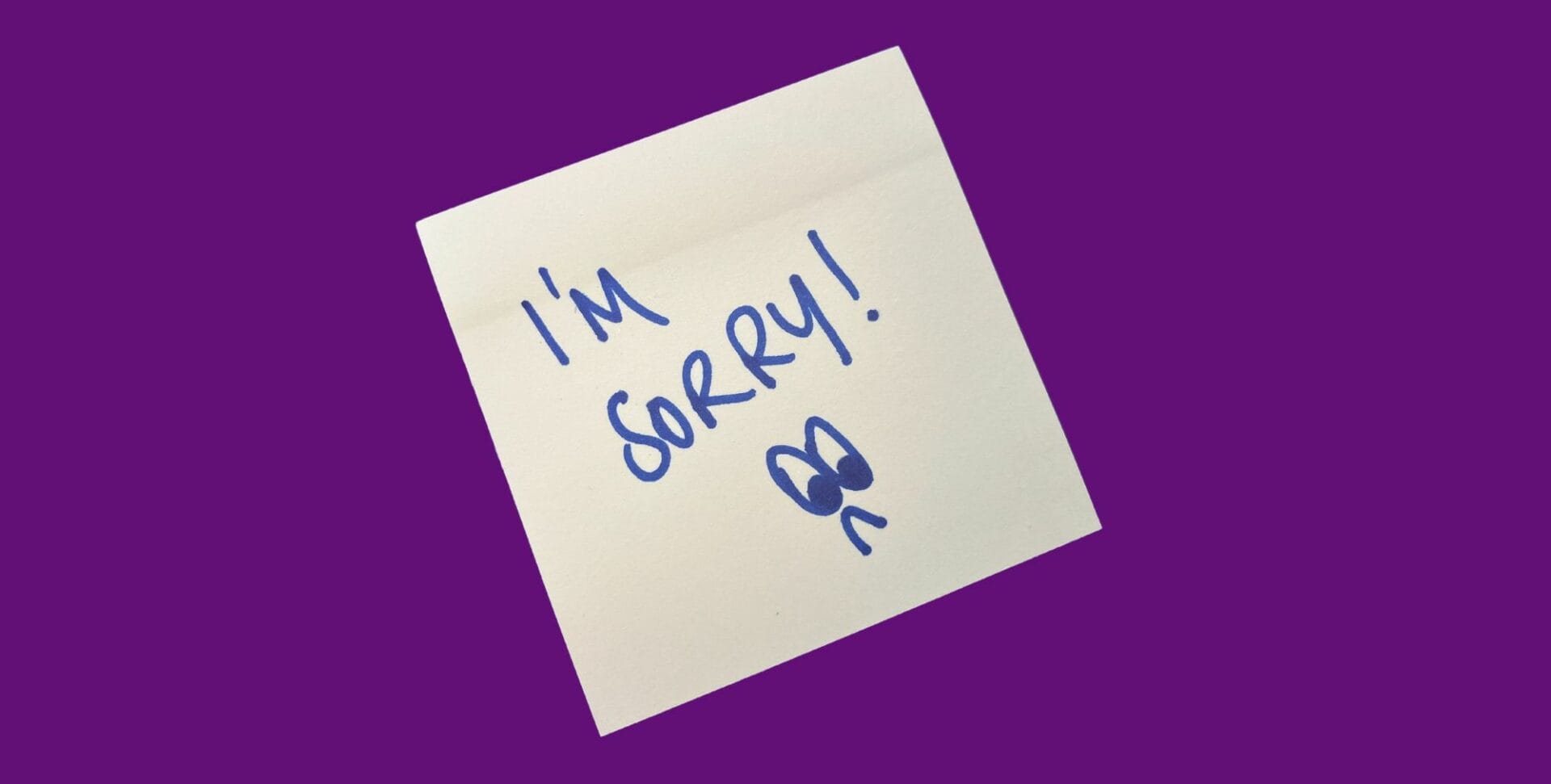Sorry, not Sorry: Master the Art of an Apology

Early in my career (the exact date is a blur), I had an eye-opening moment at the bank where I worked. My boss took me aside and dropped a truth bomb: “Stop saying ‘Sorry.'”
It turns out I would say it. A lot. Passing someone in the corridor? “Sorry.” Asking a colleague for advice on a customer’s account? “Sorry to bother you.” Declining a loan for a customer? Yep, you guessed it—another “Sorry.” When someone else bumped into me in the coffee shop I was the one who was sorry! It became my go-to filler word, a reflex for any situation, big or small.
Reflecting on it now, I realize it was more than just a verbal tic. It was like I was apologizing for just existing, for taking up space in the world. It was undermining my credibility (and confidence), which wasn’t the message I wanted to send—not then, not now. Thank goodness my boss, Stuart B, gave me the feedback I needed to hear.
Fast forward to today, and I stumbled on this video by Pantene called “Don’t be Sorry.” It hit home, and sent me down memory lane. It made me chuckle as it was like watching my own story unfold on screen. As you watch, pay attention to how you feel, how the power shifts when the word “sorry” is removed.
Sorry not Sorry
So, here’s the challenge: pay attention. How often do you find yourself apologizing unnecessarily? Are you truly sorry, or are you just falling back on old habits?
Now, don’t get me wrong. I’m not saying we should never apologize. There are times when a heartfelt apology is necessary and meaningful. But there’s a fine line between a genuine apology and an automatic “sorry” that slips out without a second thought.
There’s a time and a place for apologies at work, and it’s essential to get it right. Here are three do’s and three don’ts to keep in mind:
When Apologizing Do:
- Be Specific: When offering an apology, be specific about what you’re apologizing for. Acknowledge the impact of your actions and demonstrate genuine remorse.
- Take Ownership: Don’t deflect blame or make excuses. Take responsibility for your actions, even if it’s uncomfortable. It shows maturity and integrity.
- Offer Amends: Whenever possible, offer to make things right. Whether it’s correcting a mistake, offering assistance, or simply expressing a willingness to learn from the experience, actions speak louder than words.
When Apologizing Don’t:
- Over-Apologize: Apologizing excessively can dilute the sincerity of your apology. Say it, mean it, be done with it.
- Use Qualifiers: Avoid softening your apology with phrases like “I’m sorry if…” or “I’m sorry, but…” These qualifiers undermine the sincerity of your apology and can further damage the relationship.
- Delay Apologies: Don’t procrastinate when it comes to apologizing. It’s tempting to wait, to see if the other person noticed, to see if things pass without having to apologize. However take a deep breath and say “sorry”. Addressing the issue promptly shows respect for the other person’s feelings and demonstrates a commitment to resolving conflicts swiftly.
Apologizing isn’t about seeking validation or approval—it’s about prioritizing the well-being and dignity of others over your ego. It’s a sign of strength, not weakness, to admit when you’ve made a mistake and take proactive steps to rectify it. It’s about showing empathy, respect, and a willingness to make amends. By mastering the art of meaningful apologies, you’ll not only strengthen your relationships at work but also foster a culture of trust, respect, and accountability.

Let's Connect





